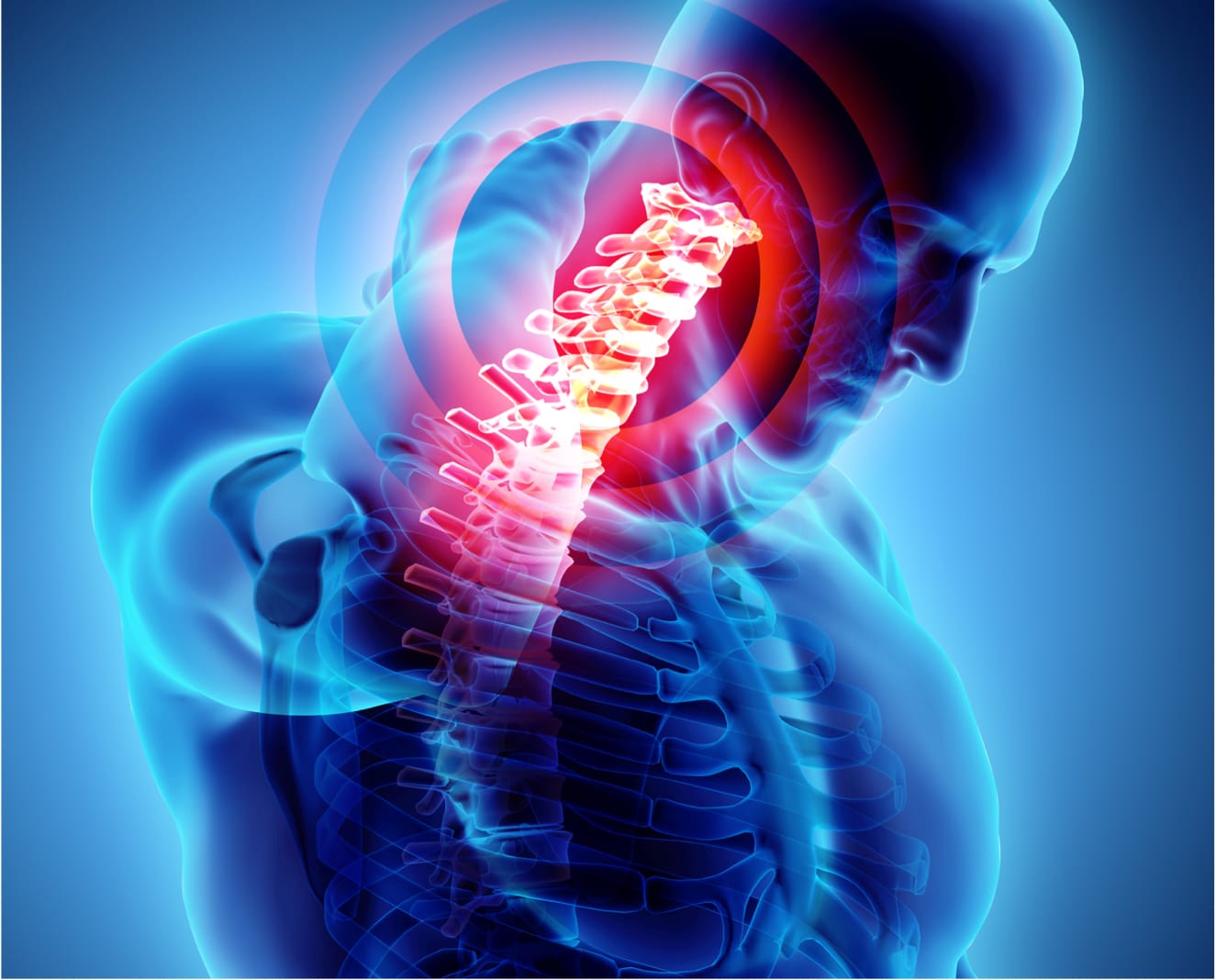The spine has several normal curves. Kyphosis is the term used to describe the naturally occurring forward curve of the thoracic spine (upper back), in addition to describing an abnormal curvature of the upper back. It can also describe a flattening of the normal curve or lordosis normal inward curvature) of the cervical or lumbar spine. Scoliosis, degenerative disc disease, vertebral compression fractures, prior surgery, or trauma can result in an abnormal kyphosis. Kyphosis can be associated with back or neck pain as well as other spinal complaints. Severe kyphosis can result in a ‘humpback’ type deformity or may lean the patient forward into a painful posture. This can cause problems and discomfort when walking or standing.
Scheuermann’s disease is a relatively rare condition that begins in childhood. Although the exact cause of it is unknown, the front of the vertebral body becomes shaped like a wedge. The wedge deformity causes the vertebrae to angle forward, bringing about an exaggerated curve of the thoracic spine. Very often the disease is not discovered until adolescence, when many patients, particularly boys, begin to complain of back pain and difficulty in maintaining a normal posture.

Scheuermann’s disease can sometimes go unnoticed until adulthood, as there can be a tendency to mistakenly attribute mild kyphosis to poor posture. Unusual or increasing back pain usually drives patients to seek a medical diagnosis. The pain of Scheuermann’s disease is felt below the deformity, along the side of the spine. Older patients with Scheuermann’s disease are at risk for herniated discs, due to the pressure placed on the spine by the deformity. Sometimes the spinal cord can be compressed by the deformity, but this is rare.
Young patients with mild kyphosis may benefit from physical therapy or a brace. In some cases, no treatment is required and the condition improves on its own. If the kyphosis gets worse and/or the pain it causes increases, surgery may be recommended. Posterior or combined spinal fusion is generally reserved for a patient whose spine has not yet fully matured or for whom kyphosis is advanced (greater than 75º).
Post-traumatic kyphosis occurs in the lower middle-back and lumbar regions and often occurs in patients who have suffered fractures or disruption of the soft tissues that stabilize the spine. Unrecognized or untreated injury to the spine and failed surgical procedures are common causes of this disorder. Post-traumatic kyphosis can occur after a fall or accident. A fractured spine can lead to spinal deformity (injury-induced kyphosis, scoliosis) and instability.
This type of kyphosis typically causes significant problems, pain, and, disability. Muscles and spinal ligaments become easily fatigued, and nerve compression is common. Surgical spinal fusion is directed toward correcting the deformity, stabilizing the spine, and alleviating pain.
Senile kyphosis is brought about with advancing age. Development of this condition can be related to posture, often corrected with adherence to an exercise and strengthening program. Most of the time, an underlying condition is the root cause of the deformity.
Cancer, osteoporosis, and long-term use of steroids or other drugs can decrease bone mass, which increases the risk for vertebral compression fractures. Multiple fractures may cause the development of a dowager’s hump. Everyday activities like carrying groceries, gardening or bending can cause the vertebra to collapse, setting the stage for another fracture. Interestingly, back pain may or may not accompany the fracture.
Patients may not feel or notice kyphosis happening to them, but over time, spinal misalignment and a tendency to lean forward affects other body systems. Breathing becomes difficult and sleep can often be interrupted as a result of back pain. Early satiety (feeling full after eating only a little) is common with severe kyphosis because changes in posture reduce the space in the chest cavity.
Treatment of senile kyphosis involves managing the underlying disorder by medical means. For example, using medicine to combat osteoporosis. Additionally, minimally invasive procedures such as kyphoplasty and vertebroplasty can assist in correcting the deformity and relieving pain. Rarely is open surgery indicated for senile kyphosis.
© Stieber MD. All Rights Reserved. Designed & Developed by Studio III
Alternate Phone: (212) 883-8868